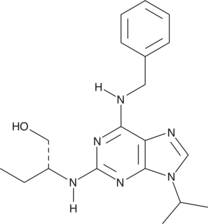Description
A flavonoid; reduces autophagy, decreases the levels of ROS and MDA content, and increases total antioxidant capacity in the kidney in a mouse model of cadmium-induced autophagy at 5-100 mg/kg; reduces tumor growth in an HL60 mouse xenograft model at 120 mg/kg every four days; inhibits histamine release from antigen-stimulated RBL-2H3 cells and decreases the expression of pro-inflammatory cytokines in HMC-1 cells
Formal name: 2-(3,4-dihydroxyphenyl)-3,5,7-trihydroxy-4H-1-benzopyran-4-one, hydrate
Synonyms:
Molecular weight: 302.2
CAS: 849061-97-8
Purity: ≥95%
Formulation: A crystalline solid
Product Type|Biochemicals|Natural Products|Flavonoids||Product Type|Biochemicals|Ox Stress Reagents|Antioxidants||Research Area|Cancer|Cell Cycle|G1||Research Area|Cancer|Cell Death|Apoptosis||Research Area|Immunology & Inflammation|Allergy||Research Area|Oxidative Stress & Reactive Species|Antioxidant Activity||Research Area|Oxidative Stress & Reactive Species|Lipid Peroxidation||Research Area|Oxidative Stress & Reactive Species|Reactive Oxygen


